As a passionate floriculturist and lifelong resident of the Golden State, I am constantly captivated by California’s rich biodiversity.
Notably, our red-flowered trees paint our landscape with their radiant hues, rivaling our famously stunning sunsets.
Today, I would like to share with you some of the most commonly seen trees with red flowers throughout the state.
Trees With Red Flowers California
- African Tulip Tree (Spathodea campanulata)
- Southern Rata (Metrosideros umbellata)
- Coral Tree (Erythrina)
- Illawarra Flame Tree (Brachychiton acerifolius)
- Red Silk-Cotton Tree (Bombax ceiba)
- New Zealand Christmas Tree (Metrosideros excelsa)
- Ohi’a Lehua (Metrosideros polymorpha)
African Tulip Tree (Spathodea campanulata)
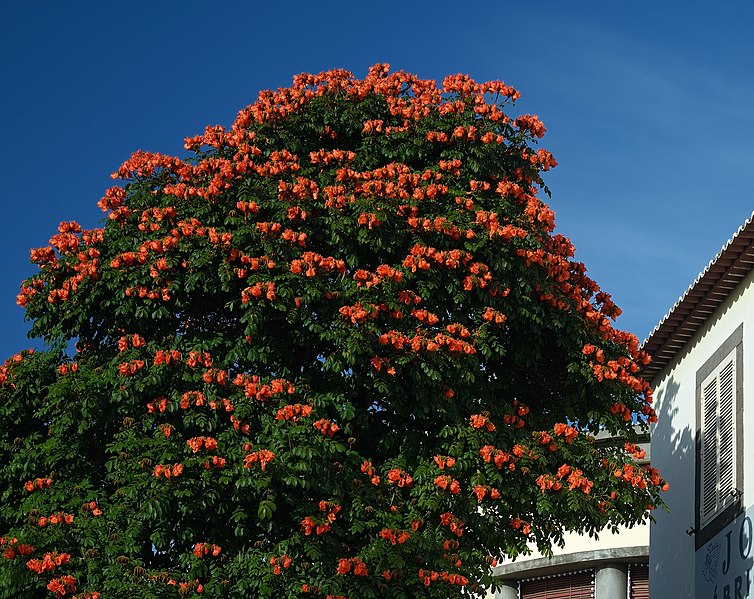
The African Tulip Tree, originally from the tropical regions of West Africa, and also known as the Fountain Tree, has become a common sight in various parts of California, particularly in the southern regions.
This tree’s beauty is truly a sight to behold, with large, bell-shaped flowers in a brilliant shade of red to orange blooming most of the year, but peaking in winter and spring.
These flowers often form a canopy of fiery colors, living up to their ‘tulip’ name.
Notably, the tree has a fast growth rate and can reach a height of up to 80 feet.
An interesting feature of this tree is its flower buds, which hold water and are often used by birds and monkeys in their native habitat for hydration.
While it’s celebrated for its ornamental value, be aware that in some regions it’s considered invasive due to its robust growth and ability to crowd out native species.
Southern Rata (Metrosideros umbellata)
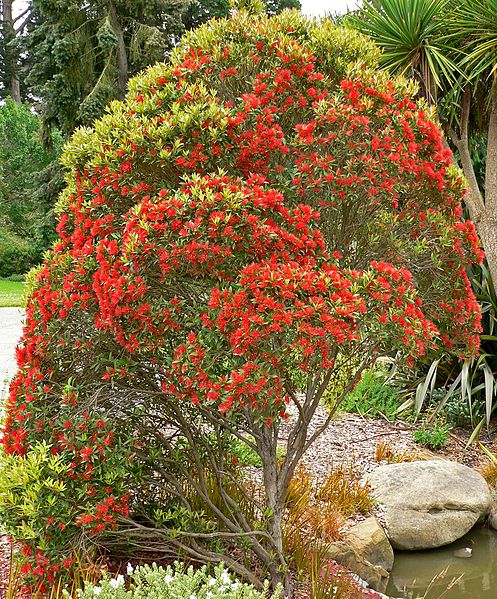
Fondly known as Southern Rata, this sturdy evergreen tree that can stand up to 15 ft tall is hard to miss when its crimson blooms emerge between November and January.
The flowers are small but they cluster together forming a brilliant red canopy that is as eye-catching as it is exotic.
Although Southern Rata prefers cooler coastal areas, you will find them blooming beautifully across different parts of the state.
Coral Tree (Erythrina)
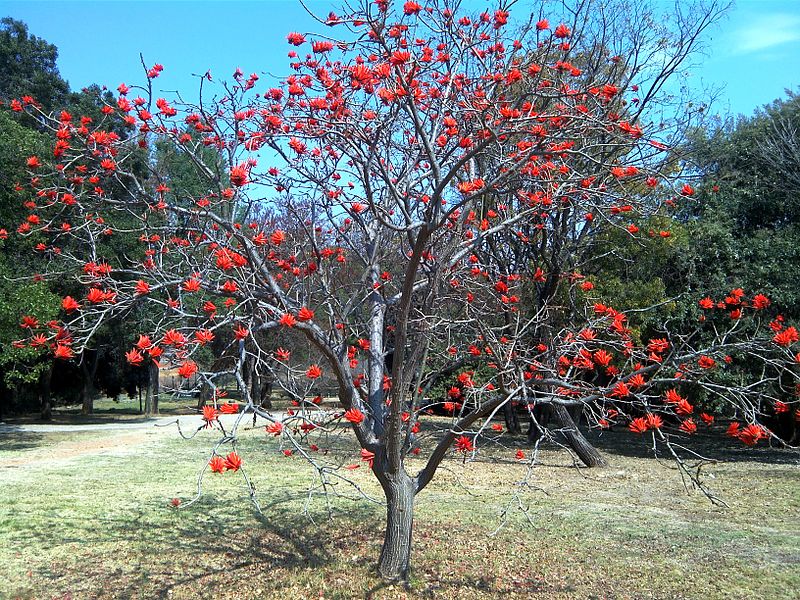
Next on our list is the Coral Tree, the official tree of Los Angeles.
The cityscape of Southern California is often adorned by these beauties, with their strikingly red flowers standing in stark contrast against the blue Californian sky.
They usually bloom from winter to spring, with their curvy, vibrant red flowers attracting hummingbirds and passersby alike.
These trees are drought-tolerant, an essential quality for plants in our arid state. Among the Coral Tree species, Erythrina caffra and Erythrina coralloides are particularly popular.
Illawarra Flame Tree (Brachychiton acerifolius)
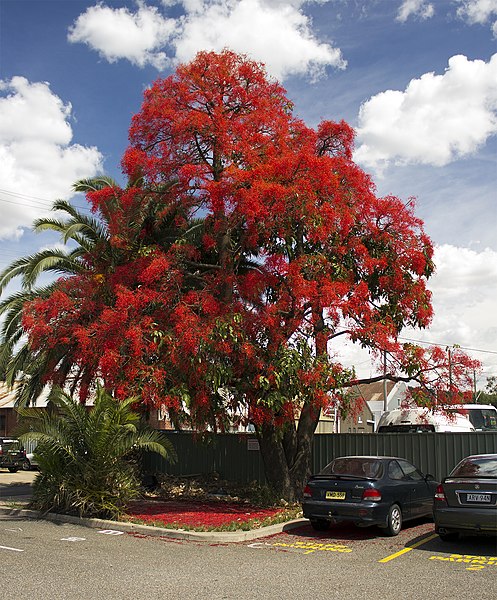
The Illawarra Flame Tree has become a fiery spectacle in many parts of California, especially in areas with a Mediterranean climate.
This large, deciduous tree is named after its brilliant red bell-shaped flowers, which typically bloom in late spring and summer, often coinciding with the end of the Jacaranda flowering, giving a sequential floral performance.
When the tree is in full bloom, the bright red flowers almost completely cover the foliage, creating a mesmerizing illusion of a tree on fire.
Red Silk-Cotton Tree (Bombax ceiba)
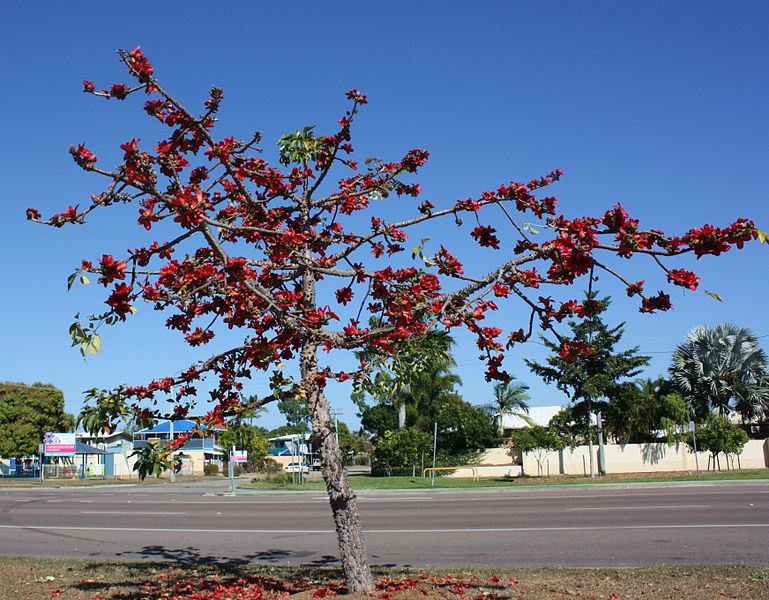
The Red Silk-Cotton Tree is a tropical beauty that has adapted well to California’s climate.
The strikingly vivid red flowers bloom from February to April, just before the new leaves appear.
Each flower contains five petals and numerous stamens that resemble a soft, fluffy cotton ball, lending the tree its name.
This majestic tree can be found in Southern California and is often planted for its unique ornamental value.
New Zealand Christmas Tree (Metrosideros excelsa)
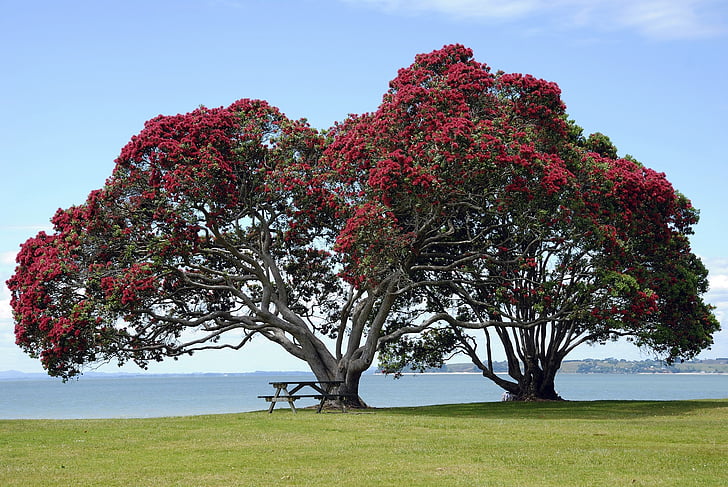
Also known as Pohutukawa, the New Zealand Christmas Tree is a coastal evergreen that loves the seaside atmosphere of California.
The striking red flowers, which bloom around Christmas time in its native habitat, appear from late spring to mid-summer in California, contributing to its festive nickname.
Not only does it serve as an excellent windbreak, but its nectar-rich flowers also attract a myriad of pollinators.
Other related guides:

